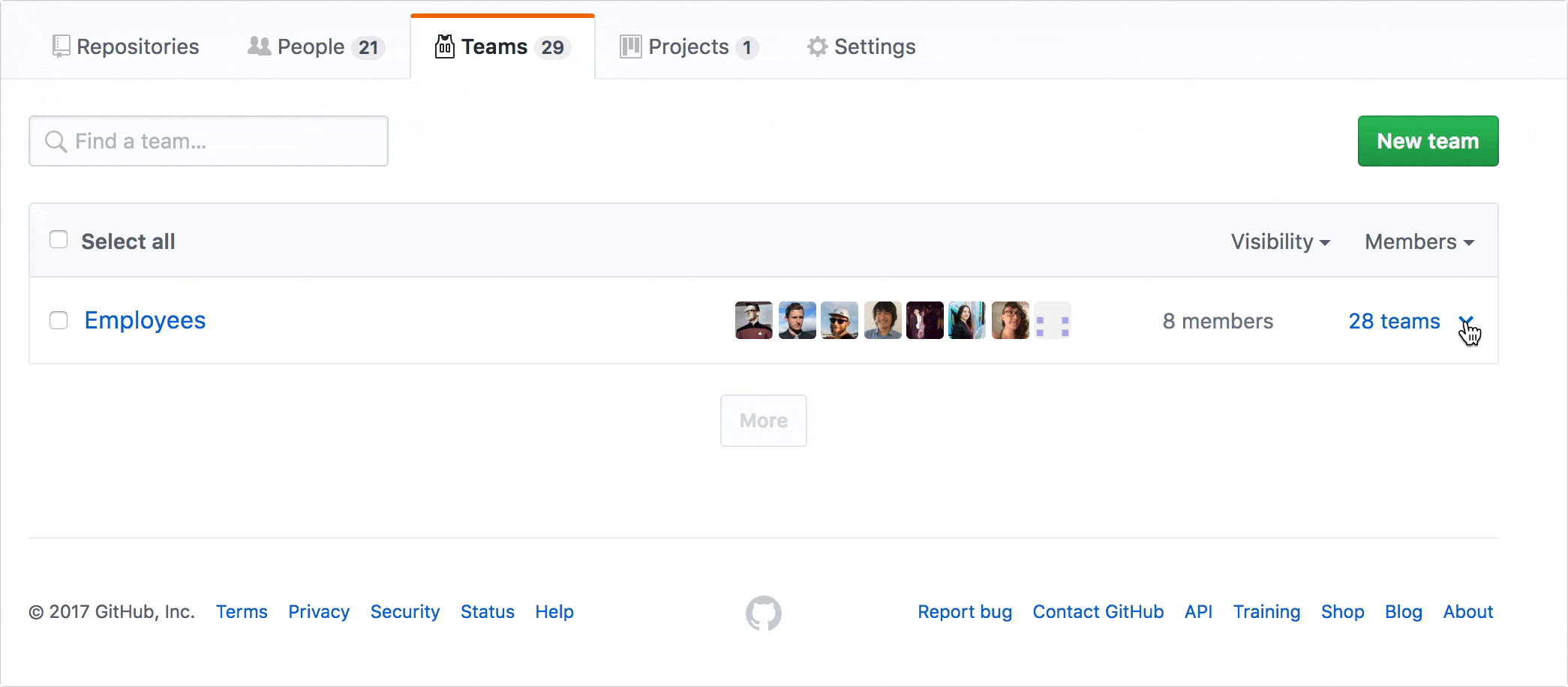Nested teams add depth to your team structure
Now you can use multiple levels of nested teams to reflect your group or company’s hierarchy within your GitHub organization, making your organization’s permissions structure clearer and easier to manage.…
Now you can use multiple levels of nested teams to reflect your group or company’s hierarchy within your GitHub organization, making your organization’s permissions structure clearer and easier to manage.

Child teams inherit their parent’s access permissions, so repository permissions and @mentioning among nested teams work from top to bottom. If your team structure is Employees > Engineering > Application Engineering > Identity, granting Engineering write access to a repository means Application Engineering and Identity also get that access. And if you @mention the Identity Team or any other team at the bottom of the organization hierarchy, they’re they only ones who will receive a notification.
Membership inheritance from parent to child teams isn’t automatic. If you’re a member of Engineering and someone creates a child team called Security, team members of Engineering aren’t automatically direct team members of Security. Security and all other teams nested under the Engineering will inherit repository permissions and @mentions but nothing else.
Check out the documentation to learn more and start structuring your existing teams!
Written by
Related posts

The future of AI-powered software optimization (and how it can help your team)
We envision the future of AI-enabled tooling to look like near-effortless engineering for sustainability. We call it Continuous Efficiency.

Let’s talk about GitHub Actions
A look at how we rebuilt GitHub Actions’ core architecture and shipped long-requested upgrades to improve performance, workflow flexibility, reliability, and everyday developer experience.

GitHub Availability Report: November 2025
In November, we experienced three incidents that resulted in degraded performance across GitHub services.